Lexus NX vs Acura RDX and Rivals: How Does it Stack Up?

Lexus has finally revealed the 2022 NX crossover, and it looks like a far more serious competitor in a ruthless segment.
Not that the current model wasn’t a sales success. Even in its twilight years, and in the middle of a pandemic, the NX racked up 55,784 sales in America through 2020, and an additional 6,954 examples in Canada. That puts it right near the top of the class on either side of the border, and makes the NX a very important model for Lexus.
Get a Quote on a New Lexus NX or Acura RDXTo that end, Lexus hasn’t rocked the boat with the design of the second-gen NX. More important are the changes under the hood and in the cabin. Lexus will be offering no less than four different engine options for the 2022 NX, including a more powerful turbo motor and the brand’s first plug-in hybrid. Meanwhile, the NX will feature an expanded suite of driver assists and a wholly revamped infotainment setup, with a massive 14-inch touchscreen available. You can dive into all the juicy details in Chris Tonn’s in-depth 2022 Lexus NX preview article.
How does the latest Lexus measure up to the Acura RDX, BMW X3, Audi Q5 and newcomer Genesis GV70? Let’s see.
Engine and Drivetrain
As mentioned above, the NX will arrive with four different powertrain options. The base NX 250 runs the brand’s familiar 2.5-liter four-cylinder, producing an anemic 203 horsepower and 184 lb-ft of torque. That’s less than the base engines in all of the competitors, which benefit from standard turbocharging. Lexus has a response in the form of the NX 350, however. This new model utilizes a larger 2.4-liter turbocharged four-cylinder, bumping power to a more impressive 275 hp and a thick 317 lb-ft of maximum twist. Both engines utilize an eight-speed automatic, with both front- and all-wheel drive available.
The 2.4-liter compares favorably to the rest of the class’ turbocharged four-cylinder. It’s second only to the Genesis GV70 in horsepower, and tops the charts for torque. The Korean and German SUVs all come with higher-powered six-cylinder motors if you’re itching for even stronger gas-only performance. On the other hand, the Acura only offers its 2.0-liter turbo mill. Three of the five, including the Lexus, use eight-speed autos; the Audi features a seven-speed dual-clutch unit, and the Acura wins the numbers game with 10 gears. Despite the strong figures, Lexus quotes a 0–60 mph (97 km/h) roll-out of 6.8 seconds, the slowest of the group. We’re talking fractions of a second though, and you’re not buying a luxury compact SUV to take to the drag strip, right?
performance | Lexus NX 350 AWD | Acura RDX SH-AWD | BMW X3 xDrive30i | Audi Q5 45 quattro | Genesis GV70 2.5T |
|---|---|---|---|---|---|
engine | 2.4-liter I4 turbo | 2.0-liter I4 turbo | 2.0-liter I4 turbo | 2.0-liter I4 turbo | 2.5-liter I4 turbo |
horsepower | 275 hp | 272 hp | 248 hp | 261 hp | 300 hp |
torque | 317 lb-ft | 280 lb-ft | 258 lb-ft | 273 lb-ft | 311 lb-ft |
transmission | eight-speed automatic | 10-speed automatic | eight-speed automatic | seven-speed DCT | eight-speed automatic |
mpg | 22/28/24 (2021) | 21/27/23 | 23/29/25 | 23/28/25 | 22/28/24 |
0–60 mph | 6.8 sec | 6.5 sec (est) | 6.0 sec | 5.7 sec | 6.2 sec (est) |
This being Lexus, there’s a hybrid option as well—two, in fact. Both are exclusively AWD. The NX 350h is a traditional hybrid, pairing the nat-asp 2.5-liter with two electric motors to produce 239 hp. The second motor acts upon the rear axle only, giving the NX electric on-demand AWD. Toyota is targeting 36 mpg (6.5 L/100 km) combined for the NX 350h, an improvement of 6 mpg (1.0 L/100 km) over the existing NX 300h. Lexus Canada expects this model to be its volume seller.
SEE ALSO: 2018 Audi SQ5 vs Mercedes-AMG GLC 43 Comparison TestThere’s also a plug-in hybrid, dubbed NX 450h+. The top performer of the lineup uses the drivetrain found in the related RAV4 Prime. With a larger-capacity lithium-ion battery, the NX 450h+ is capable of up to 36 miles (58 km) on nothing but electric power. A full charge is possible in around 150 minutes when using the standard 6.6 kW onboard charger at the maximum 240V current. Combined system output is 302 hp, helping the NX 450h+ achieve a 6.0-second run to 60 mph (97 km/h).
Both the BMW and Audi offer plug-in variants as well. The former runs closer on specs, with a 2.0-liter turbo and 80-kW electric motor producing a combined 288 hp and 310 lb-ft of torque. Its EV-only range is just 18 miles (29 km). Meanwhile the Audi boasts much more power (362 hp) and torque (369 lb-ft) with a similar 2.0-and-electric-motor setup, and a 19-mile (31-km) electron-munching range.
Tech and Features
The NX ushers in a new era of infotainment at Lexus—thank goodness. We’re not saying the last user interface was our least favorite … but we’re also not not saying that. Dubbed simply Lexus Interface, the new (touchscreen) system sure sounds impressive at first blush, promising quicker responses, over-the-air (OTA) updates, voice controls, and more.
Lexus Interface will come in two screen sizes: 9.8- and a huge 14.0-inches. Both Apple CarPlay and Android Auto are available, wirelessly to boot. The system allows for multiple user profiles, which save a driver’s preferences in the cloud for easy access in other LI-equipped vehicles. A digital key feature makes it simpler to share the NX amongst friends and family, too. The native navigation system works offline as well as online: when the system detects the NX is approaching a low-signal zone, it will automatically download map info.
Lexus needs to come correct here, as the NX will be competing with some of the best infotainment systems in the business. Audi’s MMI system is as slick as ever, with a 10.1-inch screen plunked in the middle of the Q5’s dash and an available 12.3-inch digital instrument panel. BMW has been at its own iDrive system for 20 years, and its system is similarly intuitive to the Audi. The X3 also offers an extra 0.15 inches of touchscreen, if that matters to you. The new kid on the block has top touchscreen bragging rights though, with a huge, ultra-widescreen 14.5-inch setup sitting inside the GV70. Like the Germans, it also features redundant physical controls in the center console. Finally, there’s no fingerprints and smudging happening in the RDX: it uses Acura’s True Touch Interface central touchpad.
By the Measurements
Lexus withheld all measurements for the 2022 NX at the time of its reveal. With no solid numbers to go on, we can only estimate. The NX will migrate to the TNGA platform that underpins nearly every modern transverse-engined Toyota and Lexus. It’s safe to assume the new NX will follow the industry norm and grow in most every direction, however. To be very conservative, we’ve included the current-gen measurements in the chart below.
dimension | Lexus NX 300 (2021) | Acura RDX SH-AWD | BMW X3 xDrive30i | Audi Q5 45 quattro | Genesis GV70 2.5T |
|---|---|---|---|---|---|
length | 182.7 in | 186.8 in | 185.9 in | 184.3 in | 185.6 in |
width | 73.6 in | 74.8 in | 74.4 in | 74.5 in | 75.2 in |
height | 64.8 in | 65.7 in | 66.0 in | 65.5 in | 64.2 in |
wheelbase | 104.7 in | 108.3 in | 112.8 in | 111.0 in | 113.2 in |
curb weight | 4,050 lb | 4,028 lb | 4,147 lb | 4,079 lb | 4,156 lb |
headroom (f/r) | 38.2 / 38.1 in | 38.7 / 37.6 in | 41.1 / 39.1 in | 39.6 / 39.3 in | n/a |
legroom (f/r) | 42.8 / 36.1 in | 42.0 / 35.2 in | 40.3 / 36.4 in | 40.9 / 38.0 in | n/a |
shoulder room (f/r) | 57.3 / 55.3 in | 56.0 / 54.6 in | 57.6 / 56.0 in | 57.7 / 56.5 in | n/a |
trunk space | 17.7 / 54.5 cu-ft | 29.5 / 58.9 cu-ft | 28.7 / n/a cu-ft | 25.8 / 54.0 cu-ft | n/a |
Even using the old model, the NX holds its Predator-style grille high, only really lagging behind the pack in terms of trunk space. The new NX will be related to the Toyota Venza, which offers a much more competitive 28.8 cubic feet with the seats up, and 55.1 cubes with them down.
SEE ALSO: 2021 Toyota Venza Review: First DriveThe outsider is the Genesis GV70. At the time of writing we haven’t even driven it—soon, that will change—and Genesis hasn’t even released interior measurements yet. The Korean company has said it’s targeting best-in-class rear legroom, however.
Pricing
As you can expect, Lexus also hasn’t released pricing quite yet. Currently the 2021 NX 300 begins at $38,635, including destination, for a front-drive base model. AWD is an additional $1,400 upcharge. With the second-generation model introducing the less powerful NX 250 entry model, it’s entirely possible the starting sticker will remain in the same area, despite the added kit. The 2021 lineup tops out at $47,935 for an NX 300h F Sport. Expect the NX 450h+ to easily clear $50,000, and likely nudge closer to $60k fully loaded.
Closest to the NX is its Japanese compatriot, the Acura RDX. The lineup starts at $39,925, with a cool $2,000 tacked on for Acura’s Super Handling All-Wheel Drive system. The RDX’s single-engine approach keeps things simple: it tops out less than $10,000 later, for the $49,225 RDX Advance Package.
Up next is the $42,045 Genesis GV70; note that it comes standard with AWD, somewhat explaining the higher upfront cost. Genesis will charge you up to $54,095 for a GV70 2.5T; the six-cylinder starts for a few hundred less than that, and stretches to $63,545.
Surprise, surprise: the Germans are the priciest models here. The BMW X3 starts at $43,995 for the rear-drive model, and xDrive adds $2,000 to the bottom line. Stretching to a six-cylinder model will run you at least $57,595, and we all know no BMW leaves the factory without a few options boxes ticked.
The same will be true of the Audi Q5 which, like the GV70, includes standard AWD. $44,395 will net you a Q5 45 quattro, in the first of the three available trims. The top Prestige trim is $55,095. Graduating to the V6-powered SQ5 requires at least $53,995, and tops out at $63,595.
Prefer plug-in power? The BMW X3 xDrive30e starts at $50,595; the more powerful Q5 55 e Plug-in hybrid starts at $52,995.
Become an AutoGuide insider. Get the latest from the automotive world first by subscribing to our newsletter here.

Kyle began his automotive obsession before he even started school, courtesy of a remote control Porsche and various LEGO sets. He later studied advertising and graphic design at Humber College, which led him to writing about cars (both real and digital). He is now a proud member of the Automobile Journalists Association of Canada (AJAC), where he was the Journalist of the Year runner-up for 2021.
More by Kyle Patrick



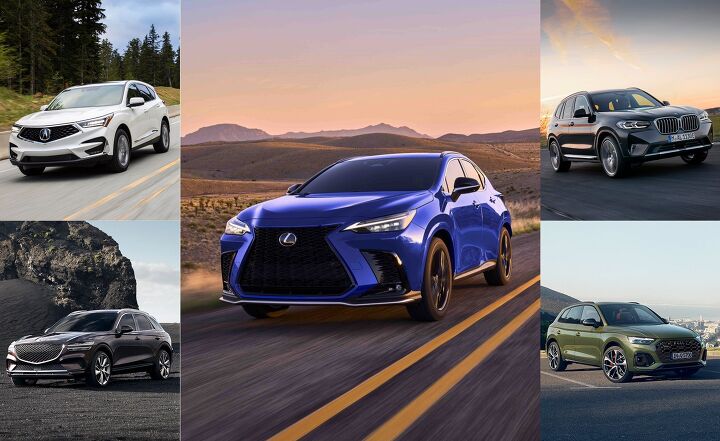





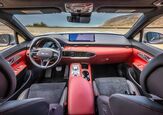
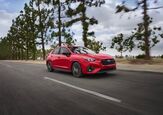






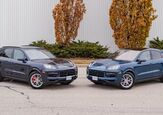
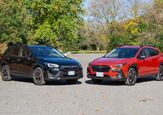

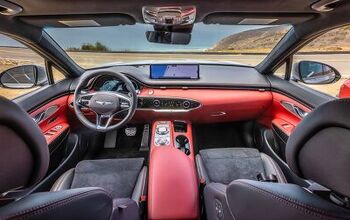

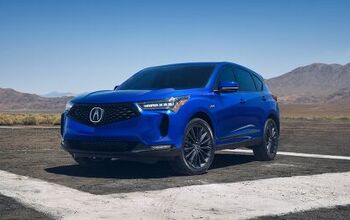
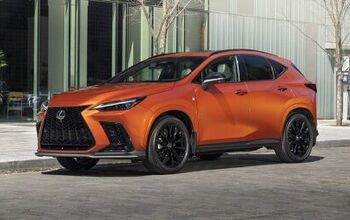
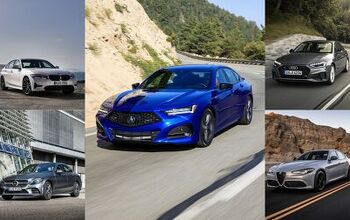












Comments
Join the conversation